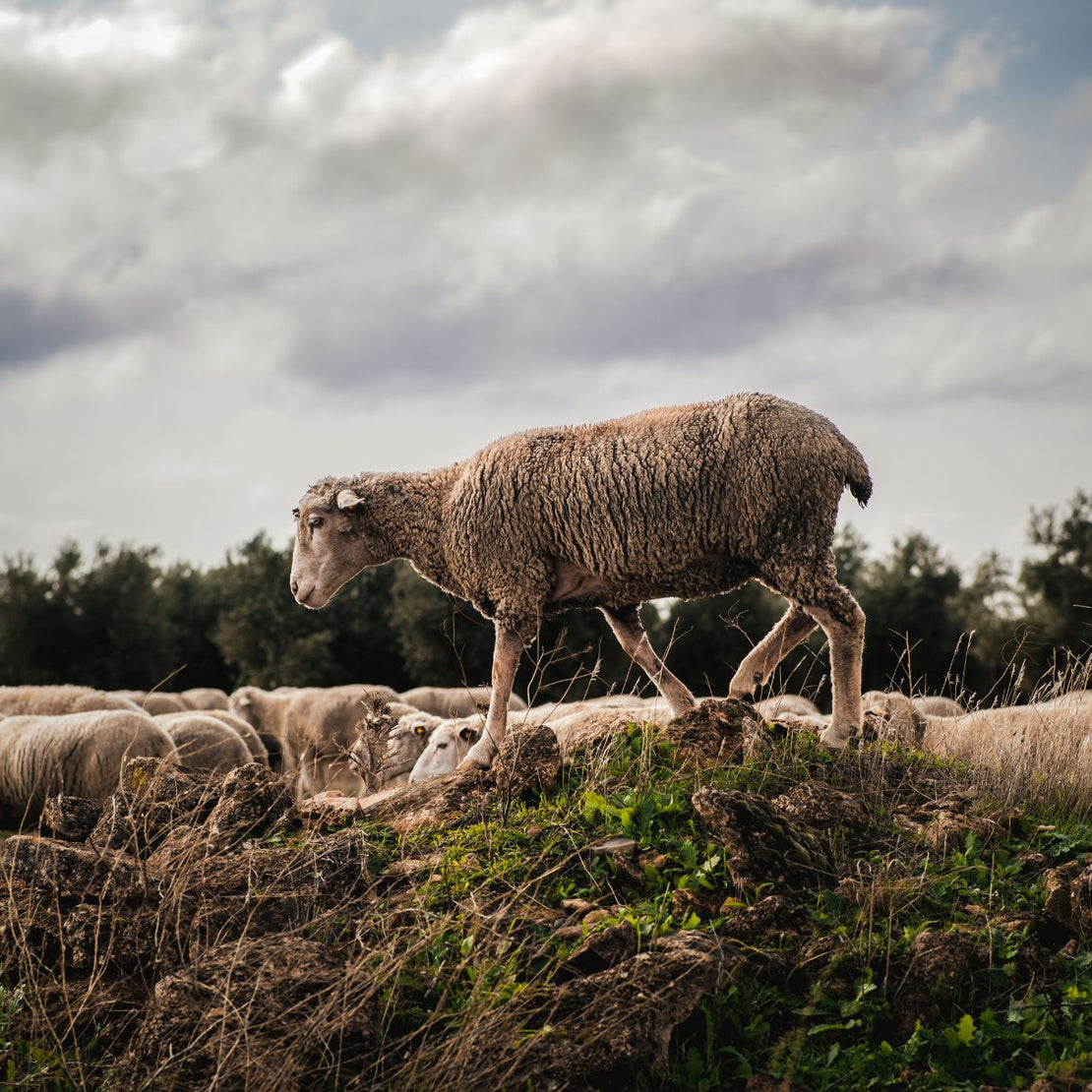MADRID
DESIGN
FESTIVAL
2025
Wool4Life is participating in the Madrid Design Festival to highlight and promote wool as a historical, cultural, artisanal, and economic legacy, as well as new initiatives that have brought wool and design into dialogue.

Weaving Networks
A cross-disciplinary exercise that allows design professionals to participate in wool-related projects and contribute to the recovery of an ancient tradition linked to the livestock and wool textile sectors.
Madrid Design Festival and Wool4Life invite designers, artists, companies, institutions, and citizens to put their creativity and commitment at the service of a movement that seeks to protect and enhance Spanish wool. A raw material whose production processes contribute to sustainability, biodiversity, craftsmanship, and local employment in rural areas.

White gold
“Oro Blanco” is a project to develop wool products with real market value, in which two textile designers, Regina Dejiménez and Inés Sistiaga, participate, along with the Wool4Life team.
The project involves exploring the entire wool processing process (cleaning, drying, and spinning) from various breeds of native Spanish sheep, endangered and found throughout Spain. From this initial phase, and thanks to the design, a special collection of items will be presented, available for purchase through a direct sales website on Amazon, created specifically for this project.
This project will generate a collection of objects, along with a physical and artistic installation at the Institución Libre de Enseñanza, which can be visited as part of Fiesta Design from February 12 to 23. All of these objects will showcase the value of design applied to the wool industry.
LA LANA TALKS ABOUT SHEPHERDS AND TRADES ON THE BRINK OF DISAPPEARANCE

Guirra Cloths
Inés Sistiaga presents Paños de Guirra , a collection of objects that explore the possibilities of wool from the Guirra sheep within the field of design – a native species of the Valencian Community in danger of extinction to which Wool4Life gives a dignified life, transforming it into various types of yarn and promoting its revaluation in the market.
With the aim of finding a place for it in the market and with a vision that combines tradition and technology, the textile designer and researcher has carried out a process of experimentation through different textile techniques, both industrial and artisanal, enhancing the material not only in its functional properties, but also as a means to rethink its use in our interiors and thus seek ways to help revitalize the Spanish wool industry that has always identified us.
Products from the Collection
BELLÓN stool
Wool has historically been the primary material for making beds and mattresses due to its hypoallergenic and thermal properties. Despite its decline, the Spanish mattress industry still persists on a small scale. Seeking to revive interest in this industry, along with an abundant material, wool filling—whose value and use have declined in the market—these seats propose an innovative use that connects past, present, and sustainability. Inspired by the way wool bales are stored after shearing, the knotting harks back to traditional mattress industry techniques and offers structural strength only achieved with wool.
The pillowcases were woven in Toledo using digital knitting with guirra wool yarn and then fulled to enhance their shape and durability. The filling is 100% Talavera wool, and the knots are made with Ripollesa wool.
BALA seat
UMBRAL & LINDE curtains
In regions like Castile, curtains on the doors of homes are a symbol of identity that combines functionality and tradition. In addition to welcoming us with their raw feel when we open them, they provide privacy on a human level, but also through their thermal, acoustic, and protective properties against dust and sun. These characteristics make wool the perfect material for this function, something we had perhaps forgotten. And from that reflection, this design is born, a contemporary version of the Castilian curtain brought to the interior of our homes. An inside-outside movement that establishes a parallel with the use of wool as a thermal insulator in architecture, bringing it, in the form of a curtain, from the interior of walls to the visible space and providing an extra touch of sensorial comfort to the space we inhabit.
Both curtains are woven in Toledo using digital knitting with guirra wool yarn. Their structures have been chosen to operate at different levels of opacity while simultaneously utilizing their insulating properties. As a result, both the opaque and translucent versions offer different levels of light and protection.
POSSIBLE Bags
Putting a fabric fresh off the knitting machine into the washing machine at 60°C and 1,400 rpm. That's what Inés Sistiaga did with a sample of guirra wool while working on the project—exactly what they say shouldn't be done, or the homemade way of making what is called "boiled wool." The result is a felted appearance, that is, shrunken and therefore compact, which provided a low-tech, domestic solution to the impossibility of developing industrial felt on a large scale at the time of creation. However, we could de-industrialize the wool felting process, transferring this finish to a washing machine and obtaining a hybrid between fabric and felt.
This is a successful example of the many failed iterations undertaken in this quest to transform guirra wool into a material that can have value within industry and design. Using this technique, this bag collection expands on the variety and showcases several of the fabrics developed during this project. Through different techniques, finishes, and diverse machinery, a vision of possibilities for and from industry is realized here.

















